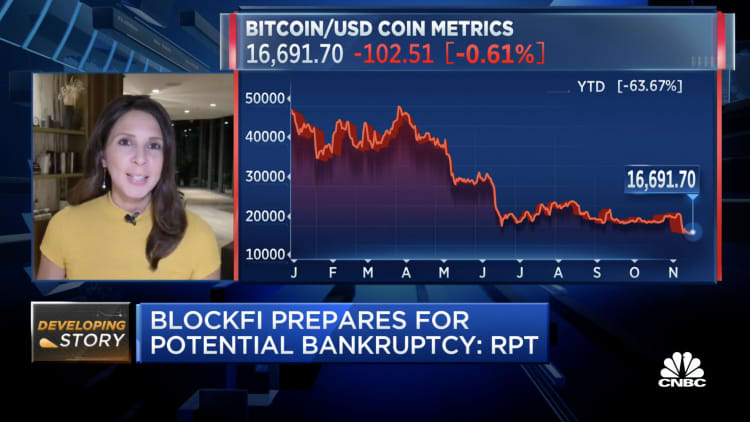
Sam Bankman-Fried, CEO of cryptocurrency exchange FTX, at the Bitcoin 2021 conference in Miami, Florida, on June 5, 2021.
Eva Marie Uzcategui | Bloomberg | Getty Images
Sam Bankman-Fried, co-founder of bankrupt crypto firm FTX, spent almost a year trying to convince regulators to let him introduce a derivatives product that would allow retail investors to trade with borrowed money, according to Rostin Behnam, chairman of the Commodity Futures Trading Commission.
In an interview with CNBC’s “Squawk Box” on Wednesday, Behnam said Bankman-Fried had been lobbying the CFTC to amend the rules so FTX could let users trade derivatives using margin rather than paying upfront. He also wanted to offer the contracts directly to users, without having to go through a futures commission merchant.
“It would have been a non-intermediated, margined model,” said Behnam, who described the proposal as a “very tricky issue from a risk perspective.”
Prior to its bankruptcy filing last week, FTX had a registered derivatives platform with the CFTC called FTX US Derivatives. The platform was a rebranding of LedgerX, a company that FTX acquired in 2021.
FTX US Derivatives is one of the few FTX-related properties that’s not a part of its bankruptcy proceedings and remains operational today. However, it appears to have returned to using the LedgerX brand. If you go to the FTX US Derivatives website, it redirects you to ledgerx.com. And Zach Dexter, who was CEO of FTX US Derivatives, says on his LinkedIn profile that he’s CEO at LedgerX. The platform lets traders buy options, swaps and futures on bitcoin and ethereum.
Starting in Dec. 2021, Bankman-Fried and his senior leadership team made frequent visits to the CFTC to advocate for an amendment to its existing license, Behnam said.
When asked what Behnam thought of Bankman-Fried over the course of meeting with him for nearly a year, the chairman said that the former FTX chief “knows markets, at least he tries to suggest that” and he “wanted to really aggressively have this amendment passed.”
Bankman-Fried’s backers appealed to the CFTC directly to back his plan, Behnam said. They included Fidelity Investments, Fortress Investment Group, and even universities from across the country.
FTX, which was valued at $32 billion by private investors earlier this year, spiraled in spectacular fashion last week as reports of liquidity problems resulted in customers withdrawing billions of dollars a day from their accounts. However, FTX didn’t have the capital to honor those requests because it had used customer deposits for a variety of purposes, including for trading at Bankman Fried’s hedge fund, Alameda Research. Bankman-Fried also disclosed on Twitter on Wednesday that FTX had built up around $13 billion of leverage.
Behnam said his agency’s staffers were still in the process of reviewing FTX’s application for an amended license when FTX and approximately 130 additional affiliated companies, including Alameda and FTX’s U.S. subsidiary collectively filed for bankruptcy protection.
Since then, LedgerX has reportedly withdrawn its application for leveraged derivatives trading.
Before the implosion, Bankman-Fried had been trying to play the role of industry savior as the crypto market sank and lenders and hedge funds went belly up. In May, he also bought a 7.6% stake in trading app Robinhood, which at the time had lost more than three-quarters of its value since its IPO last year. In April, FTX bought a stake in equities exchange IEX.
“If you think about it, in retrospect, with his Robinhood acquisition and his relationship with IEX — it goes beyond crypto what FTX was trying to do,” Behnam said.
WATCH: Authorities eyeing bringing Sam Bankman-Fried to the U.S. for questioning












